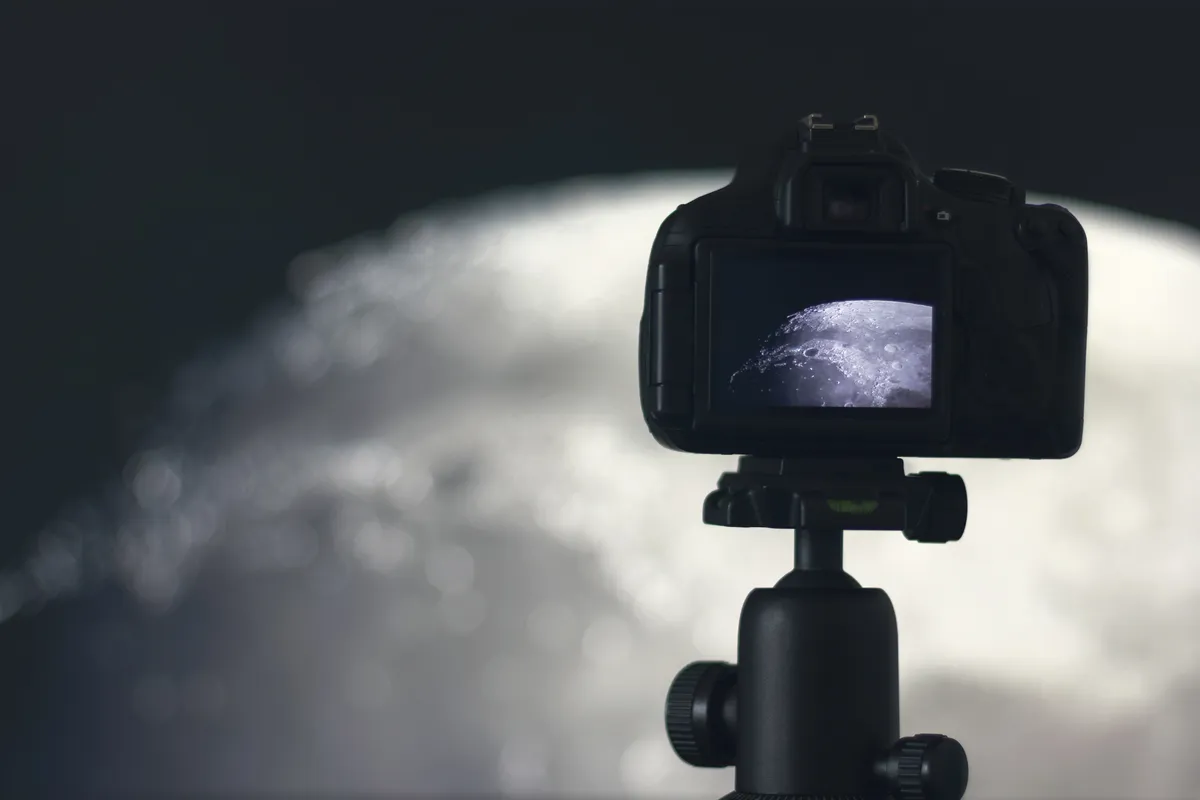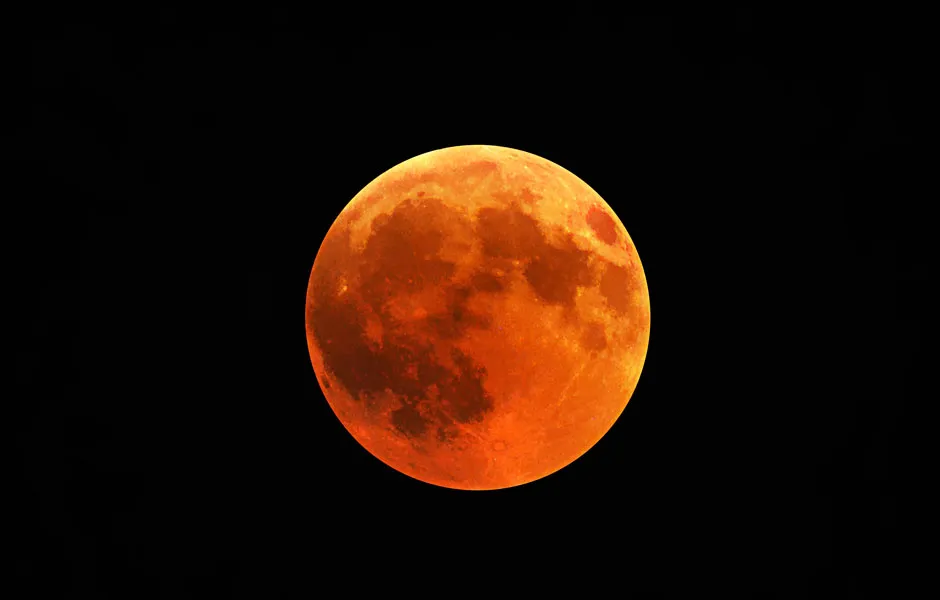When it’s low on the horizon, a full Moon is one of the most captivating sights in the night sky. It’s also one of the easiest astronomical events to see. You don't need any special equipment to view the full Moon, and you definitely don’t need a star chart to find it.
Learning a bit about the different craters on the Moon can be rewarding, and by observing the Moon on a regular basis, you’ll get to know how its features appear to morph with the moon phase.
Whether you're an experienced astronomer, budding astrophotographer or into astrology, it’s useful to know when you can see the next full Moon in the UK. If you’re keen to try your hand at lunar photography, expert Pete Lawrence has put together a guide on how to take great pictures of the Moon, which is packed full of useful (and practical!) hints and tips.
Discover more great sights in the night sky with our astronomy for beginners guide, or mark your calendars for nature’s fireworks; all the meteor showers of 2024 are listed in our definitive guide.
When is the next full Moon?
The next full Moon will be 25 January 2024, known as the Wolf Moon. Other names for the January full Moon include Moon After Yule, Ice Moon and Old Moon.
A full Moon is one part of the lunar cycle, which takes 29.53 days (29 days, 12 hours, 44 minutes, and 3 seconds) to complete. In other words, we get a full Moon every 29.53 days. Because this is less than one calendar month, we sometimes get two full Moons in a month, where the ‘extra’ full Moon is known as a 'Blue Moon'.
During the full Moon phase of the lunar cycle, the Moon, Earth and Sun are arranged in a straight line, with the Moon situated 180 degrees opposite the Sun. That’s why, during a full Moon, the Sun sets as the Moon rises (and vice versa).
Full moon dates 2024
- 25 January, 5:54pm: Wolf Moon
- 24 February, 12:30pm: Snow Moon
- 25 March, 7am: Worm Moon
- 23 April, 11:49pm: Pink Moon
- 23 May, 1:53pm: Flower Moon
- 22 June, 1:08am: Strawberry Moon
- 21 July, 10:17am: Buck Moon
- 19 August, 6:26pm: Sturgeon Moon
- 18 September, 2:34am: Corn Moon
- 17 October, 11:25am: Hunter’s Moon
- 15 November, 9:28pm: Beaver Moon
- 15 December, 9:02am: Cold Moon
When are the supermoons in 2024?
Supermoons are an unofficial designation, but one which has gained popularity in recent years. It refers to when a full Moon looks bigger and brighter than other full Moons in the year.
The Moon orbits the Earth in an ellipse, which is why the Moon’s distance away from us varies throughout the year. When the Moon reaches its closest point to us, this is called lunar perigee. When it’s furthest away from us, it’s known as lunar apogee.
If perigee occurs close to a full Moon, the Moon looks bigger and brighter – and we see a supermoon. Typically, this is when the Moon is around 360,000km or less away from us, although that’s not always the case.
Supermoon 2024 dates
Sturgeon supermoon
19 August: 361,969 kilometres (224,917 miles)
Corn supermoon
18 September: 357,485 kilometres (222,131 miles)
Hunter’s supermoon
17 October: 357,363 kilometres (222,055 miles)
Beaver supermoon
15 November: 361,866 kilometres (224,853 miles)
What is the lunar cycle?
The Moon appears to change shape throughout the lunar cycle:
- New Moon
- Waxing crescent Moon
- First Quarter
- Waxing gibbous Moon
- Full Moon
- Waning gibbous Moon
- Third quarter
- Waning crescent Moon
- New Moon again.
We only see the Moon because it reflects light from the Sun. As it orbits the Earth, the amount of light it can reflect back at us changes. When the Moon goes between the Sun and the Earth, no light can reflect back at us so there is a new Moon.
When the Earth is between the Sun and the Moon, a full Moon occurs as the Moon’s face is fully illuminated by the Sun. During the times in between, only parts of the Moon can reflect light back to Earth.

If the Moon orbited Earth in the same plane as Earth orbits the Sun, then the Moon would block out light from the Sun every time there was a new Moon.
But this doesn’t happen because the Moon orbits at an angle of around 5 degrees compared to Earth’s orbit of the Sun. When the Moon passes through Earth’s plane of orbit and the three bodies – Earth, Moon and Sun line up.
This is called a syzygy. When a syzygy happens during a new Moon we have a solar eclipse, and a syzygy during a full Moon creates a lunar eclipse.
How can I photograph the moon at night?
To capture the Moon with your phone, you might need to play around with your camera settings. Don’t use a flash, turn down the ISO and set your focus to 100.
If you are unsure how to make these changes, download a night photography app (such as NightCap – available on the App Store, £2.99) which will allow you greater control over the camera settings than your usual camera app.

If you’re using a digital camera, start with an aperture of f/11 to f/16 and a shutter speed of between 1/60th and 1/125th of a second. A tripod will help keep your camera still and reduce any shaking from the low light conditions when you need to keep the shutter open a little longer.
To get the best pictures of the Moon you need to work out your shot, making sure you can frame the Moon depending on the scenery around you. To plan where you can see the Moon, or anything in the night sky, there is plenty of software available (like the Moon Locator app – available on Android devices, free).
To find more software worthy of your home screen, check out our guide to the best astronomy apps.
Lunar photography is a fantastic way to get started in astrophotography. The Moon's appearance changes throughout the month, not just in terms of shape, but craters and mares do, too. Likewise, shadows create tricks of the light, making the Moon a brilliant subject.
You don’t need much in the way of equipment; just a smartphone and a tripod will get you some good snaps.
- Related: Read Pete Lawrence’s expert guide to how to photo the moon which features beginner, intermediate and advanced projects you can try at home.
Does the Moon rotate?
Yes, the Moon is rotating. But it is tidally locked, which means it rotates in sync with its orbit of the Earth, so for every orbit of the Earth it completes one rotation.
This means as it travels around our planet, the same side faces us the whole time. This is why we have the term ‘dark side of the Moon’, for the side we never see. In reality, that side of the Moon gets just as much sunlight as the side we see, so the correct term is the ‘far side of the Moon’.
What is a Blood Moon and how can I see it?
"During a total lunar eclipse, the Moon turns a red colour because Earth’s atmosphere scatters blue light away and only the red gets through. This is called a Blood Moon," says Abigail Beall.
The next total lunar eclipse visible from the UK will be on 14 March 2025 (UK, Europe, Africa, Americas, east Asia, Australia).
We have a little while to wait for the next Blood Moon; below are the dates for the next total lunar eclipse that will give us a Blood Moon:
14 March 2025:UK, Europe, Africa, America, east Asia, Australia
7 September 2025:UK, Europe, Asia, Australia
3 March 2026: America, Asia, Australia
31 December 2028:UK, Europe, Asia, Australia, western US and Canada

Read more about the Moon: